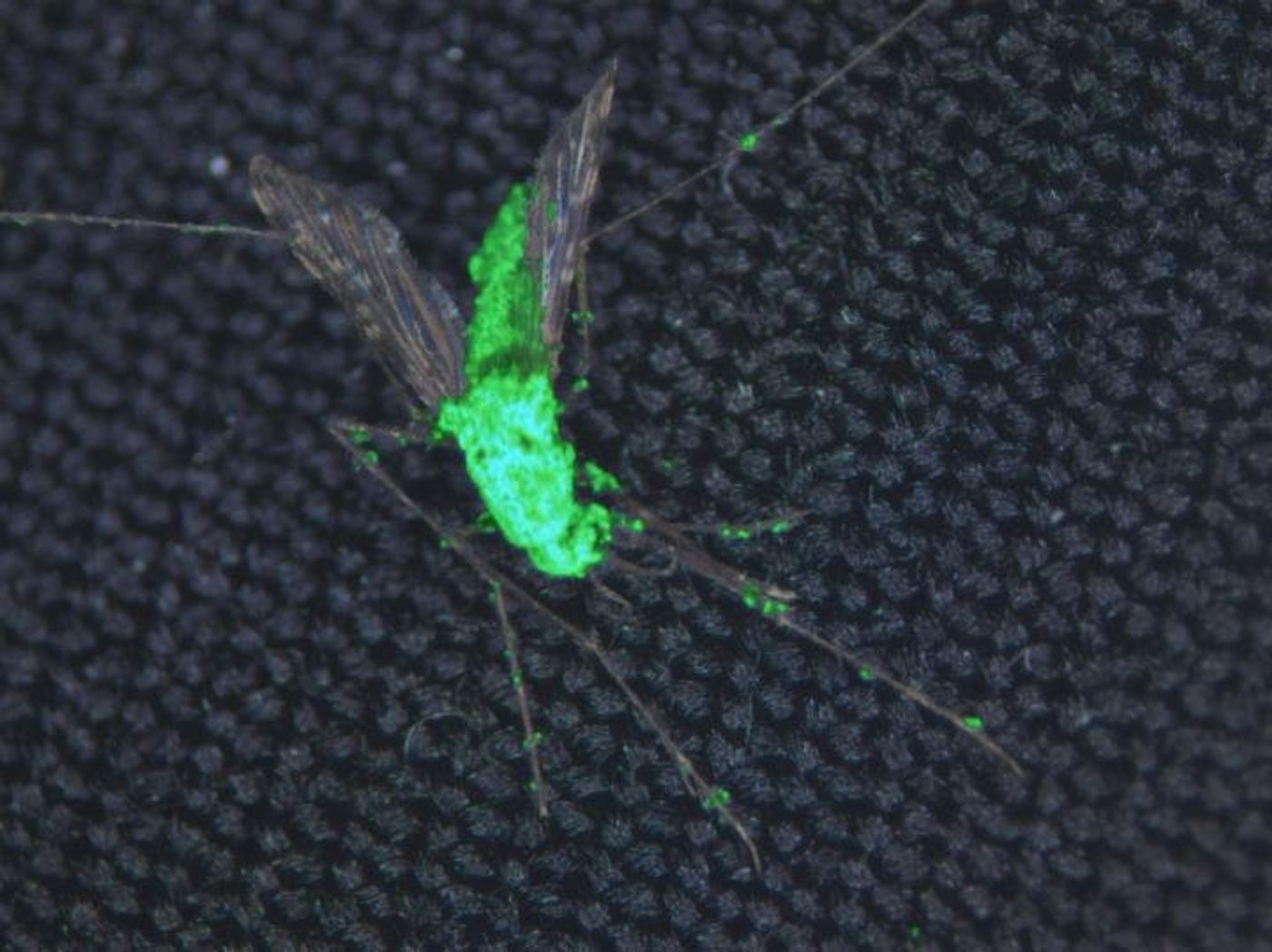Fungus, toxins team up to kill mosquitoes
An international team of researchers engineered a fungus to kill mosquitoes.
Mosquitoes spread serious human diseases, including malaria, Zika virus, and yellow fever. There are nearly 200 million cases of malaria reported each year in sub-Saharan Africa alone. While there are many insecticides on the market, they are becoming increasingly ineffective as the mosquitoes develop resistance.
Image credit: Brian Lovett
This has left researchers scrambling for new ways to control mosquito populations and curb the spread of disease. Reporting in Nature Scientific Reports, the research group describes how they engineered a fungus to produce spider and scorpion toxins that kill mosquitoes.
According to study author Raymond St. Leger, “the WHO has identified insecticide resistance as the major threat to effective mosquito control, which is relevant not only to malaria but to a number of mosquito-borne diseases such as dengue, yellow fever, viral encephalitis and filariasis. Unlike chemical insecticides that target only sodium channels, many spider and scorpion toxins hit the nervous system's calcium and potassium ion channels, so insects have no pre-existing resistance."
The group engineered the entomopathogenic fungus Metarhizium pingshaense to coexpress green fluorescent protein (GFP) and one of several arthropod-derived toxins. Three of the toxins are made by spiders - the KCa/CaV blocker ω/κ-hexatoxin-Hv1a is a hybrid toxin, ω-hexatoxin-Hv1a is a CaV channel blocker, and U1-AGTX-Ta1a is an insect hormone. The final toxin they used is a NaV channel inhibitor called AaIT that is made by scorpions.
Then, they tested the efficacy of these engineered fungi against three groups of mosquitoes - two insecticide-resistant species and one insecticide-susceptible species.
They applied the fungi to sheets that the mosquitoes could land on after taking a blood meal. Mosquitoes that were exposed to the cloth for at least 1 hour picked up around 130 spores (a lethal dose).
Importantly, mosquitoes that were resistant to insecticides were not resistant to the fungi. The LT50 (lethal time) value for mosquitoes exposed to fungi that produced the hybrid toxin (Met-Hybrid) was roughly 4.14 days, compared to 6.18 days for fungi that did not express a toxin. Because the fungi produced GFP, the researchers observed fluorescent fungi on the mosquitoes.
Next, it was important to know how specific the engineered fungi were for mosquitoes - such a treatment would need to be safe not only for humans, but for other insects such as honey bees.
Honey bees were exposed to Met-Hybrid or control fungi and observed for two weeks. Luckily, there was no difference in the mortality rates between bees exposed to fungi or not exposed to fungi at all, and bees that died did not show evidence of fungal infection.
Finally, the researchers wanted to know if a fungus that expressed two toxins instead of just one would kill mosquitoes more quickly. They found that Met-Hybrid/AaIT spores produced an LT50 of roughly 5.3 days, while Met-Hybrid spores produced an LT50 of 6.39 days, and the LT50 for Met-AaIT spores was around 7.2 days.
Then, they used the Tabashnik synergism equation to confirm their findings - 5 days after infection, it took less than half as much Met-Hybrid/AaIT to kill the mosquitoes at the same rate as either Met-Hybrid or Met-AaIT alone. Sure enough, two toxins are better than one!
Sources: Science Daily, Nature Scientific Reports









